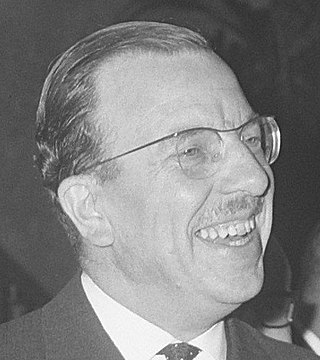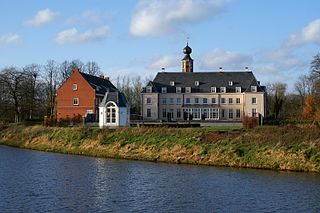Adamorobe Sign Language or AdaSL is a village sign language used in Adamorobe, an Akan village in eastern Ghana. It is used by about 30 deaf and 1370 hearing people (2003).
Flemish Sign Language is a deaf sign language of Belgium. It is closely related to French Belgian Sign Language, but they are now generally recognized as distinct languages. VGT is estimated to include around 6,000 sign-language users.

Dutch Sign Language is the predominant sign language used by deaf people in the Netherlands.

Eric Fernando Botteghin is a Brazilian professional footballer who plays as a centre back for Italian club Ascoli.

St John's Catholic School for the Deaf is a school for deaf and hearing impaired children in Boston Spa, Wetherby, West Yorkshire, England. Monsignor de Haerne, an influential Belgian priest and senator founded the School at a small house in Handsworth in 1870 with the help from the Daughters of Charity of St. Vincent de Paul. The School was relocated to Boston Spa in 1875. With efforts from the Daughters of Charity, the School has had a Vincentian Family ethos for almost a century and a half. The School will celebrate its 150th anniversary in 2020.

Zwarte Piet, also known in English by the translated name Black Pete, is the companion of Saint Nicholas in the folklore of the Low Countries. The earliest known illustration of the character comes from an 1850 book by Amsterdam schoolteacher Jan Schenkman in which he was depicted as a black Moor from Spain.

The Caribbean Netherlands are the three public bodies of the Netherlands that are located in the Caribbean Sea. They consist of the islands of Bonaire, Sint Eustatius and Saba, although the term "Caribbean Netherlands" is sometimes used to refer to all of the islands in the Dutch Caribbean. In legislation, the three islands are also known as Bonaire, Sint Eustatius and Saba or the BES islands. The islands are currently classified as public bodies in the Netherlands and as overseas countries and territories of the European Union; thus, European Union law does not automatically apply.

Eugene Bernard Holiday is a Sint Maarten politician and the first governor of Sint Maarten, which became a country within the Kingdom of the Netherlands on 10 October 2010. He was installed by the Council of Ministers of the Kingdom of the Netherlands on 7 September 2010. He was president of Princess Juliana International Airport before assuming his office as governor.
Franciscus Hermanus Bach, officially Bachg, was a Dutch painter.

Louis Josephus Maria van de Laar was a Dutch politician of the defunct Catholic People's Party (KVP) now merged into the Christian Democratic Appeal (CDA) and historian.
Titia Brongersma was a Frisian poet of the late 17th century. Her book, De bron-swaan, was published in 1686 and is virtually the only trace of her literary activity. She also gained prominence for excavating a dolmen at Borger, Netherlands in 1685.

Irma Sluis is a Dutch sign language interpreter. She is an interpreter in Dutch sign language (NGT) and international sign language (Gestuno) and has published about working as a sign language interpreter in the Netherlands. Since 2005 she has been working with the Dutch broadcasting organisation NOS where she interprets the morning news.

Oud Herlaer was a castle on the Dommel just east of Vught. All that remains is a farm which incorporates parts of the old castle. While not that much remains of the castle, there are a lot of recent studies about Oud Herlaer and its owners. The farm is planned to be opened as an art center in 2021. The name Oud Herlaer,, signifies that later on Nieuw-Herlaer Castle was built about 1 kilometer upstream.

Nieuw-Herlaer Castle is a manor in Sint-Michielsgestel, the Netherlands. It contains a tower which was part of the preceding castle.

Haanwijk is an estate and nature reserve with a manor house near Sint-Michielsgestel in North-Brabant, Netherlands.

Sint-Michielsgestel is a village in the municipality of Sint-Michielsgestel, Netherlands.

The fourth Rutte cabinet is the current cabinet of the Netherlands. It was inaugurated on 10 January 2022. The cabinet is a continuation of the third Rutte cabinet and is formed by the conservative liberal People's Party for Freedom and Democracy (VVD), the social liberal Democrats 66 (D66) and the Christian democratic Christian Democratic Appeal (CDA) and Christian Union (CU) after the election of 2021. The cabinet fell on 7 July 2023, after failing to reach an agreement on separate treatment of refugees fleeing from war. As a result, the cabinet became demissionary.

Charles Hubert Eyck was a Dutch visual artist. Together with Henri Jonas and Joep Nicolas, he was a pioneer of the Limburg School.
Henk Staghouwer is a Dutch administrator and Christian Union politician. He served as Minister of Agriculture, Nature and Food Quality in the fourth Rutte cabinet from 10 January to 5 September 2022. From 24 April 2013 to 10 January 2022 he was a member of the provincial executive of Groningen.















